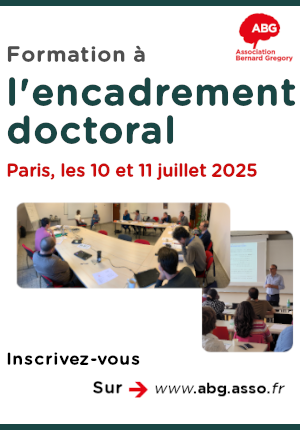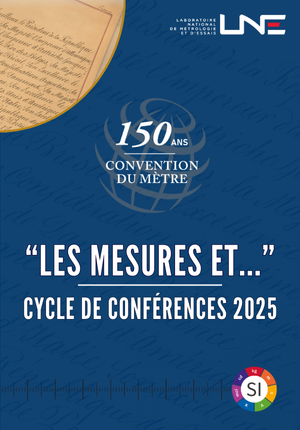Développement de l'IRM fingerprinting pour le suivi des AVC // Development of Magnetic Resonance Fingerprinting for stroke monitoring
|
ABG-132692
ADUM-66718 |
Thesis topic | |
| 2025-06-27 |
Université Grenoble Alpes
La Tronche Cedex - Auvergne-Rhône-Alpes - France
Développement de l'IRM fingerprinting pour le suivi des AVC // Development of Magnetic Resonance Fingerprinting for stroke monitoring
- Biology
MRI, AVC, MRfingerprint, modèle animal
MRI, Stoke, MRfingerprinting, animal model
MRI, Stoke, MRfingerprinting, animal model
Topic description
L'accident vasculaire cérébral (AVC) ischémique constitue l'une des principales causes de mortalité et d'invalidité à long terme dans le monde. Sa prise en charge clinique repose sur une caractérisation précise et dynamique des lésions à l'aide de l'imagerie médicale. Les protocoles traditionnels d'imagerie par résonance magnétique (IRM) utilisés pour le suivi de l'AVC adoptent une approche multiparamétrique, combinant des images anatomiques (telles que l'imagerie FLAIR et des séquences pondérées en T2) avec des images fonctionnelles (comme l'imagerie pondérée en diffusion et l'imagerie de perfusion). Ces stratégies d'imagerie sont ajustées en fonction du stade physiopathologique de la lésion — aigu, subaigu ou chronique — et visent à orienter les décisions thérapeutiques en délimitant l'infarctus cérébral, la pénombre ischémique et l'œdème environnant.
Les avancées récentes en IRM quantitative ont conduit au développement de l'IRM fingerprint (MRF), ainsi que de sa variante vasculaire, la MRF vasculaire. Ces techniques permettent une cartographie simultanée de plusieurs paramètres tissulaires et vasculaires, tels que les temps de relaxation T1 et T2, la densité de protons, le volume sanguin cérébral ou encore l'oxygénation vasculaire. Elles présentent un potentiel prometteur pour la quantification robuste et reproductible de biomarqueurs, en surmontant les limitations qualitatives de l'IRM conventionnelle.
Cependant, l'utilité clinique et préclinique de la MRvF dans l'imagerie de l'AVC reste largement inexplorée, notamment en ce qui concerne sa capacité à caractériser longitudinalement le microenvironnement lésionnel. De plus, la segmentation et l'interprétation des données multiparamétriques sont encore majoritairement réalisées manuellement par des experts, ce qui pose des problèmes de cohérence et de passage à l'échelle. Or, les méthodes d'intelligence artificielle émergentes, en particulier l'apprentissage profond, permettent désormais l'extraction automatisée de des caractéristiques complexes issues de l'imagerie, ouvrant la voie à une caractérisation fine des lésions (nécrose, pénombre, œdème vasogénique, etc.).
Sujet de thèse
Cette thèse a pour objectif de développer la technique MRvF pour le suivi automatique des AVC dans des modèles animaux précliniques. Le projet s'articulera autour de deux axes principaux :
• Évaluation et validation des protocoles MRvF : La fiabilité et la spécificité des protocoles MRvF dans le contexte de l'imagerie de l'AVC seront établies par comparaison avec les techniques d'IRM multiparamétriques conventionnelles et seront validées par des analyses histopathologiques ex vivo.
• Application à la caractérisation longitudinale de l'AVC : Une fois validée, l'approche MRvF sera appliquée au suivi de l'évolution des lésions ischémiques à travers les différents stades physiopathologiques (aigu, subaigu, chronique). Cela inclura la quantification automatisée in vivo de paramètres tissulaires spécifiques afin de permettre une caractérisation dynamique et objective de l'évolution lésionnelle dans le temps.
------------------------------------------------------------------------------------------------------------------------------------------------------------------------
------------------------------------------------------------------------------------------------------------------------------------------------------------------------
Context
Ischemic stroke is a leading cause of death and long-term disability worldwide. Its clinical management relies heavily on precise, imaging-based characterization of lesion dynamics over time. Traditional magnetic resonance imaging (MRI) protocols used for stroke follow-up take a multiparametric approach, combining anatomical modalities (e.g. FLAIR and T2-weighted imaging) with functional modalities (e.g. diffusion-weighted imaging and perfusion-weighted imaging). These imaging strategies are adapted according to the pathophysiological stage of the lesion — acute, subacute or chronic — and aim to inform therapeutic decisions by delineating the core infarct, the penumbra and the surrounding oedema.
Recent advances in quantitative MRI have introduced magnetic resonance fingerprinting (MRF) and its vascular variant MR vascular Fingerprinting (MRvF), which enable the simultaneous mapping of multiple tissue and vascular parameters such as T1 and T2 relaxation times, proton density, cerebral blood volume or even vessel oxygenation. These techniques offer promising potential for the robust and reproducible quantification of biomarkers, overcoming the qualitative limitations of conventional MRI.
The clinical and preclinical utility of MRF in stroke imaging remains largely unexplored, particularly regarding its ability to characterize the evolving lesion microenvironment longitudinally. Furthermore, lesion segmentation and interpretation from multiparametric datasets are still largely performed manually by experts, which poses challenges in terms of consistency and scalability. Yet, emerging artificial intelligence methods, particularly deep learning, now allow for the automated extraction and integration of complex imaging features, enabling fine-grained intralesional characterization (e.g. necrosis, penumbra and vasogenic oedema).
Thesis subject
This thesis will develop multiparametric MRF to automatically assess ischemic stroke status in preclinical animal models. This goal will be addressed in two main phases:
- Evaluation and validation of MRF protocols: reliability and specificity of MRF protocols in the context of stroke imaging will be established by comparing them with conventional multiparametric MRI techniques and validating them through ex vivo histopathological analyses.
- Application to longitudinal stroke characterization: a validated MRF approach will then be applied to monitor the progression of ischemic lesions across distinct pathophysiological stages (acute, subacute, and chronic). This includes the automated in vivo quantification of tissue-specific parameters to enable the dynamic and objective characterization of lesion evolution over time.
------------------------------------------------------------------------------------------------------------------------------------------------------------------------
------------------------------------------------------------------------------------------------------------------------------------------------------------------------
Début de la thèse : 01/10/2025
Les avancées récentes en IRM quantitative ont conduit au développement de l'IRM fingerprint (MRF), ainsi que de sa variante vasculaire, la MRF vasculaire. Ces techniques permettent une cartographie simultanée de plusieurs paramètres tissulaires et vasculaires, tels que les temps de relaxation T1 et T2, la densité de protons, le volume sanguin cérébral ou encore l'oxygénation vasculaire. Elles présentent un potentiel prometteur pour la quantification robuste et reproductible de biomarqueurs, en surmontant les limitations qualitatives de l'IRM conventionnelle.
Cependant, l'utilité clinique et préclinique de la MRvF dans l'imagerie de l'AVC reste largement inexplorée, notamment en ce qui concerne sa capacité à caractériser longitudinalement le microenvironnement lésionnel. De plus, la segmentation et l'interprétation des données multiparamétriques sont encore majoritairement réalisées manuellement par des experts, ce qui pose des problèmes de cohérence et de passage à l'échelle. Or, les méthodes d'intelligence artificielle émergentes, en particulier l'apprentissage profond, permettent désormais l'extraction automatisée de des caractéristiques complexes issues de l'imagerie, ouvrant la voie à une caractérisation fine des lésions (nécrose, pénombre, œdème vasogénique, etc.).
Sujet de thèse
Cette thèse a pour objectif de développer la technique MRvF pour le suivi automatique des AVC dans des modèles animaux précliniques. Le projet s'articulera autour de deux axes principaux :
• Évaluation et validation des protocoles MRvF : La fiabilité et la spécificité des protocoles MRvF dans le contexte de l'imagerie de l'AVC seront établies par comparaison avec les techniques d'IRM multiparamétriques conventionnelles et seront validées par des analyses histopathologiques ex vivo.
• Application à la caractérisation longitudinale de l'AVC : Une fois validée, l'approche MRvF sera appliquée au suivi de l'évolution des lésions ischémiques à travers les différents stades physiopathologiques (aigu, subaigu, chronique). Cela inclura la quantification automatisée in vivo de paramètres tissulaires spécifiques afin de permettre une caractérisation dynamique et objective de l'évolution lésionnelle dans le temps.
------------------------------------------------------------------------------------------------------------------------------------------------------------------------
------------------------------------------------------------------------------------------------------------------------------------------------------------------------
Context
Ischemic stroke is a leading cause of death and long-term disability worldwide. Its clinical management relies heavily on precise, imaging-based characterization of lesion dynamics over time. Traditional magnetic resonance imaging (MRI) protocols used for stroke follow-up take a multiparametric approach, combining anatomical modalities (e.g. FLAIR and T2-weighted imaging) with functional modalities (e.g. diffusion-weighted imaging and perfusion-weighted imaging). These imaging strategies are adapted according to the pathophysiological stage of the lesion — acute, subacute or chronic — and aim to inform therapeutic decisions by delineating the core infarct, the penumbra and the surrounding oedema.
Recent advances in quantitative MRI have introduced magnetic resonance fingerprinting (MRF) and its vascular variant MR vascular Fingerprinting (MRvF), which enable the simultaneous mapping of multiple tissue and vascular parameters such as T1 and T2 relaxation times, proton density, cerebral blood volume or even vessel oxygenation. These techniques offer promising potential for the robust and reproducible quantification of biomarkers, overcoming the qualitative limitations of conventional MRI.
The clinical and preclinical utility of MRF in stroke imaging remains largely unexplored, particularly regarding its ability to characterize the evolving lesion microenvironment longitudinally. Furthermore, lesion segmentation and interpretation from multiparametric datasets are still largely performed manually by experts, which poses challenges in terms of consistency and scalability. Yet, emerging artificial intelligence methods, particularly deep learning, now allow for the automated extraction and integration of complex imaging features, enabling fine-grained intralesional characterization (e.g. necrosis, penumbra and vasogenic oedema).
Thesis subject
This thesis will develop multiparametric MRF to automatically assess ischemic stroke status in preclinical animal models. This goal will be addressed in two main phases:
- Evaluation and validation of MRF protocols: reliability and specificity of MRF protocols in the context of stroke imaging will be established by comparing them with conventional multiparametric MRI techniques and validating them through ex vivo histopathological analyses.
- Application to longitudinal stroke characterization: a validated MRF approach will then be applied to monitor the progression of ischemic lesions across distinct pathophysiological stages (acute, subacute, and chronic). This includes the automated in vivo quantification of tissue-specific parameters to enable the dynamic and objective characterization of lesion evolution over time.
------------------------------------------------------------------------------------------------------------------------------------------------------------------------
------------------------------------------------------------------------------------------------------------------------------------------------------------------------
Début de la thèse : 01/10/2025
Funding category
Funding further details
Financement d'un établissement public Français
Presentation of host institution and host laboratory
Université Grenoble Alpes
Institution awarding doctoral degree
Université Grenoble Alpes
Graduate school
216 ISCE - Ingénierie pour la Santé la Cognition et l'Environnement
Candidate's profile
Qualifications requises
- Master (ou équivalent) en ingénierie biomédicale ou en imagerie médicale.
- Expérience pratique des IRM (préclinique ou clinique).
- Maîtrise de l'analyse quantitative des données et de la validation statistique.
- Maîtrise d'outils de traitement d'images et d'analyse de données (par exemple MATLAB, Python, FSL ou équivalent).
- Capacité à travailler efficacement dans des environnements de recherche interdisciplinaires et collaboratifs.
Qualifications souhaitées
- Expérience en IA appliquée à l'imagerie médicale.
- familiarisé avec les modèles précliniques d'AVC et les protocoles d'expérimentation animale.
- Connaissance de base des techniques histologiques pour la validation ex vivo.
- Compétences en matière de rédaction et de communication scientifiques (par exemple, rédaction de manuscrits, de rapports ou de présentations).
Required Qualifications - Master's degree (or equivalent) in Biomedical Engineering or Medical Imaging. - Practical experience with MRI scanners (preclinical or clinical). - Proficiency in quantitative data analysis and statistical validation. - Familiarity with image processing and data analysis tools (e.g., MATLAB, Python, FSL or equivalent). - Proven ability to work effectively in interdisciplinary and collaborative research environments. Preferred Qualifications - Introductory experience with deep learning applied to medical imaging - Familiarity with preclinical models of stroke and relevant animal experimentation protocols. - Basic knowledge of histological techniques for ex vivo validation. - Scientific writing and communication skills (e.g., drafting manuscripts, reports, or presentations).
Required Qualifications - Master's degree (or equivalent) in Biomedical Engineering or Medical Imaging. - Practical experience with MRI scanners (preclinical or clinical). - Proficiency in quantitative data analysis and statistical validation. - Familiarity with image processing and data analysis tools (e.g., MATLAB, Python, FSL or equivalent). - Proven ability to work effectively in interdisciplinary and collaborative research environments. Preferred Qualifications - Introductory experience with deep learning applied to medical imaging - Familiarity with preclinical models of stroke and relevant animal experimentation protocols. - Basic knowledge of histological techniques for ex vivo validation. - Scientific writing and communication skills (e.g., drafting manuscripts, reports, or presentations).
2025-07-18
Apply
Close
Vous avez déjà un compte ?
Nouvel utilisateur ?
More information about ABG?
Get ABG’s monthly newsletters including news, job offers, grants & fellowships and a selection of relevant events…
Discover our members
 Aérocentre, Pôle d'excellence régional
Aérocentre, Pôle d'excellence régional  SUEZ
SUEZ 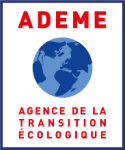 ADEME
ADEME  Ifremer
Ifremer  Laboratoire National de Métrologie et d'Essais - LNE
Laboratoire National de Métrologie et d'Essais - LNE  MabDesign
MabDesign  ASNR - Autorité de sûreté nucléaire et de radioprotection - Siège
ASNR - Autorité de sûreté nucléaire et de radioprotection - Siège  Groupe AFNOR - Association française de normalisation
Groupe AFNOR - Association française de normalisation  Tecknowmetrix
Tecknowmetrix  Généthon
Généthon  ONERA - The French Aerospace Lab
ONERA - The French Aerospace Lab 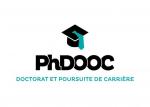 PhDOOC
PhDOOC  Nokia Bell Labs France
Nokia Bell Labs France  CESI
CESI  TotalEnergies
TotalEnergies 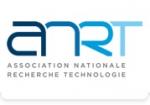 ANRT
ANRT  MabDesign
MabDesign  Institut Sup'biotech de Paris
Institut Sup'biotech de Paris  CASDEN
CASDEN




